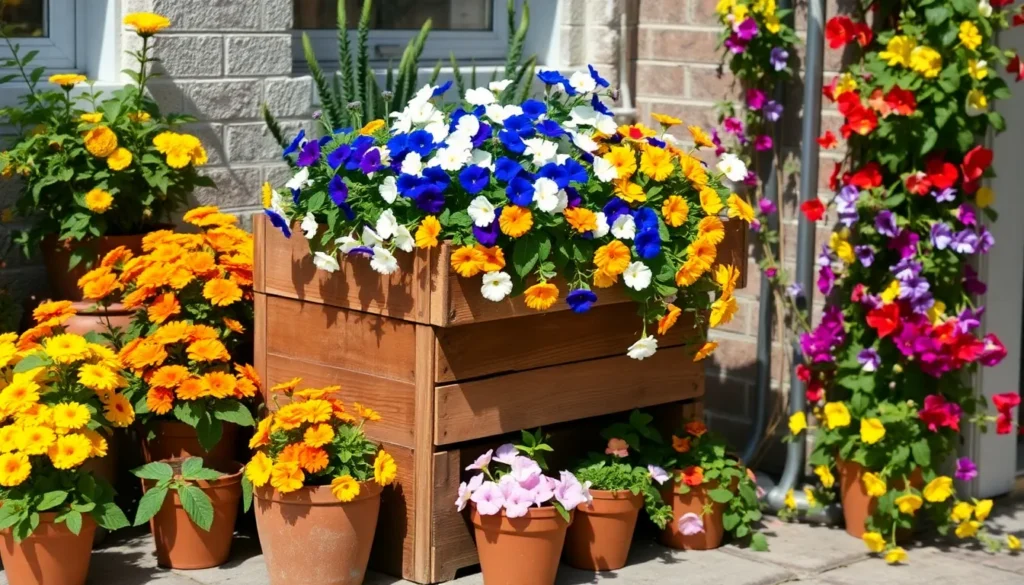Creating a vibrant garden in a small space is not only possible but a deeply rewarding endeavor. Whether you’re a novice gardener just starting out or an experienced green thumb looking to maximize your compact outdoor area, choosing the right flowers can transform your garden into a colorful oasis. Small gardens present unique opportunities to cultivate stunning floral displays, and with the right plant selection, you can enjoy a low-maintenance yet lush sanctuary.
In this article, we’ll introduce you to a curated list of easy-to-care-for flowers that thrive in small spaces, ensuring your garden remains beautiful with minimal fuss. You’ll discover how these resilient blooms can bring joy and tranquility to your life while respecting your time and energy. From vibrant perennials that return year after year to annuals bursting with color, our guide will help you select the perfect plants to fit your garden’s specific needs. With thoughtful tips and practical advice, you’ll soon find that creating a flourishing small garden is well within your reach.
Choosing Low-Maintenance Flower Varieties
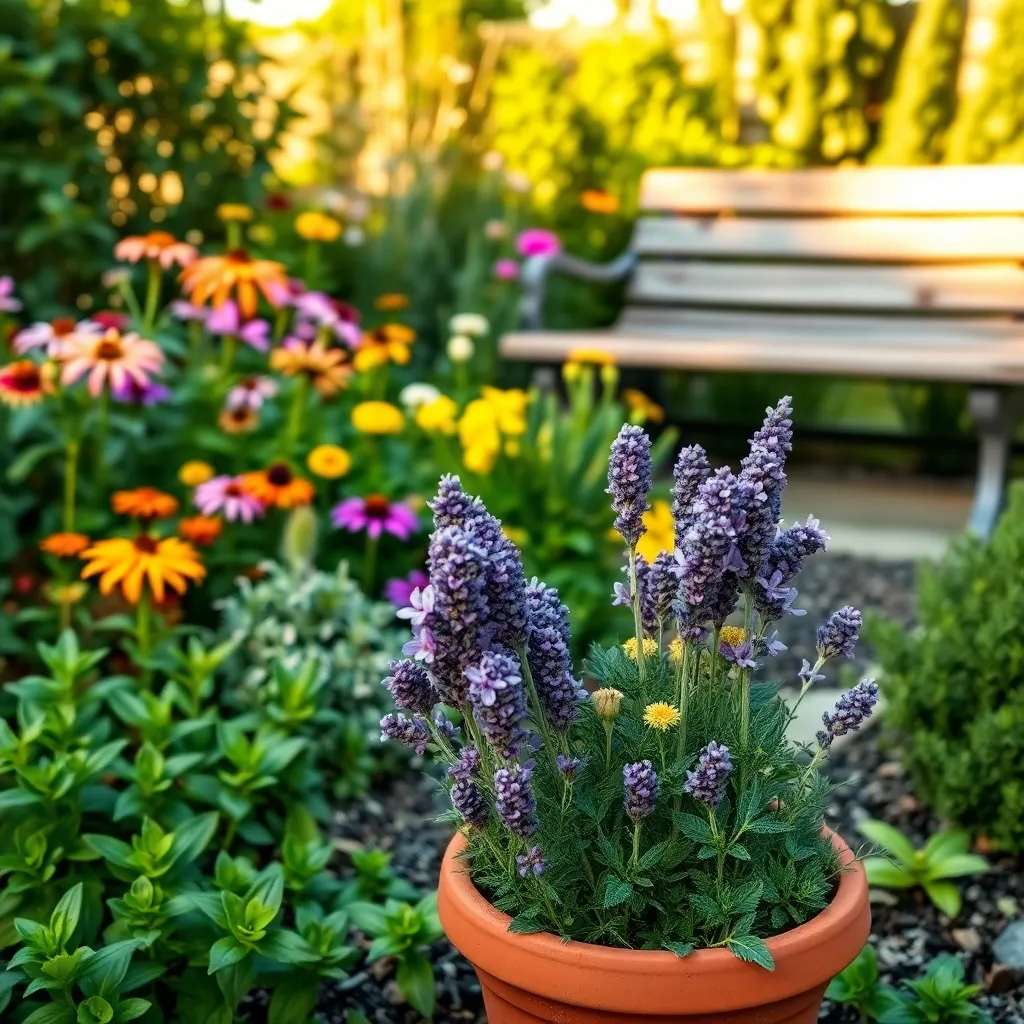
When choosing low-maintenance flower varieties for your small garden, it’s essential to focus on plants that thrive with minimal intervention. Consider hardy perennials like Lavender and Black-eyed Susans, which are known for their resilience and ability to withstand various conditions.
Lavender is a fantastic choice for gardeners looking for beauty and fragrance with little upkeep. Plant it in well-draining soil and ensure it receives full sunlight for at least six hours a day for optimal growth.
Black-eyed Susans, recognized for their cheerful yellow blooms, require little more than regular watering during dry spells. These flowers prefer full sun and can tolerate a range of soil types, making them an excellent option for gardeners of all skill levels.
For a splash of color that lasts from spring to fall, consider adding Daylilies to your garden. These robust flowers adapt well to various climates and need only occasional deadheading to encourage continuous blooming.
Though Daylilies are generally low-maintenance, providing them with well-drained, loamy soil can enhance their performance. Water them deeply but infrequently to promote strong root systems, which will help them thrive through dry periods.
Finally, don’t overlook the charm of Hostas, particularly if you have shaded areas in your garden. While they prefer moist, rich soil, Hostas can survive in less-than-ideal conditions, making them a versatile choice for low-maintenance landscaping.
Ideal Small Garden Flower Picks
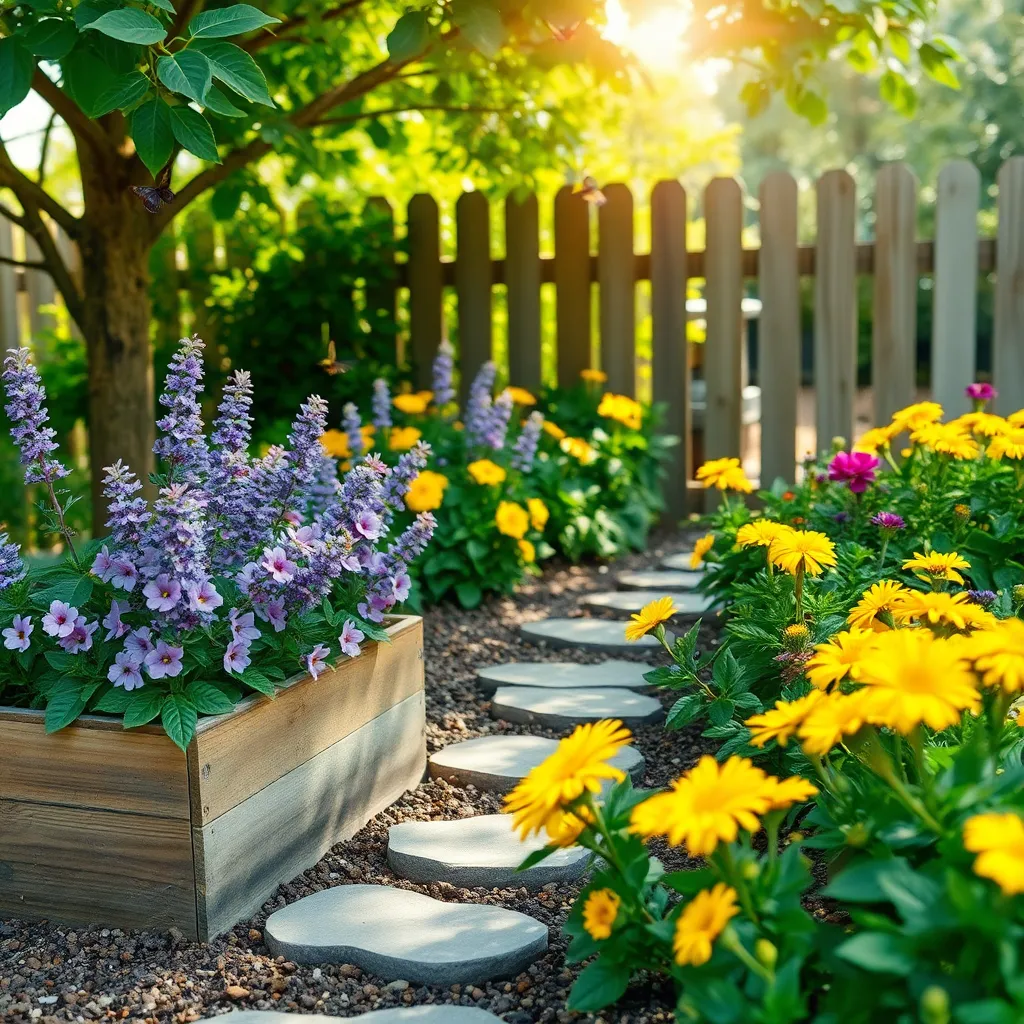
Small gardens can be vibrant and full of life with the right selection of flowers. Opt for compact, easy-to-care-for plants that won’t overwhelm your limited space but will still provide a burst of color.
Consider planting marigolds, as they are hardy and thrive in a range of conditions. These sun-loving flowers can be planted in well-drained soil and need moderate watering, making them a practical choice for beginners.
Lavender is another excellent option for small gardens due to its compact growth and delightful fragrance. It requires full sun and thrives in sandy or well-drained soils, and once established, it is drought-tolerant, needing only occasional watering.
For a splash of color throughout the season, zinnias are a fantastic choice. They prefer loamy soil and full sun, and regular deadheading will encourage more blooms, enhancing their vibrant display.
Compact Flower Layout Strategies

When designing a compact flower layout, consider using vertical space to maximize your garden’s potential. Install trellises or wall planters to allow climbing plants like sweet peas or clematis to add height and color without taking up ground space.
Another effective strategy is to layer your plants by height. Place taller plants such as foxgloves or delphiniums towards the back of your garden bed, with medium-height plants like lavender in the middle, and shorter flowers like pansies or marigolds at the front.
Incorporate container gardening to further optimize small spaces. Choose pots of varying sizes and group them together for a lush look, focusing on low-maintenance flowers like geraniums or begonias, which thrive in containers.
Ensure you select flowers with similar sunlight and watering needs to simplify care. For instance, group sun-loving species such as zinnias and snapdragons together, ensuring they receive at least six hours of sunlight daily and are watered evenly.
Streamlining Flower Care Routines
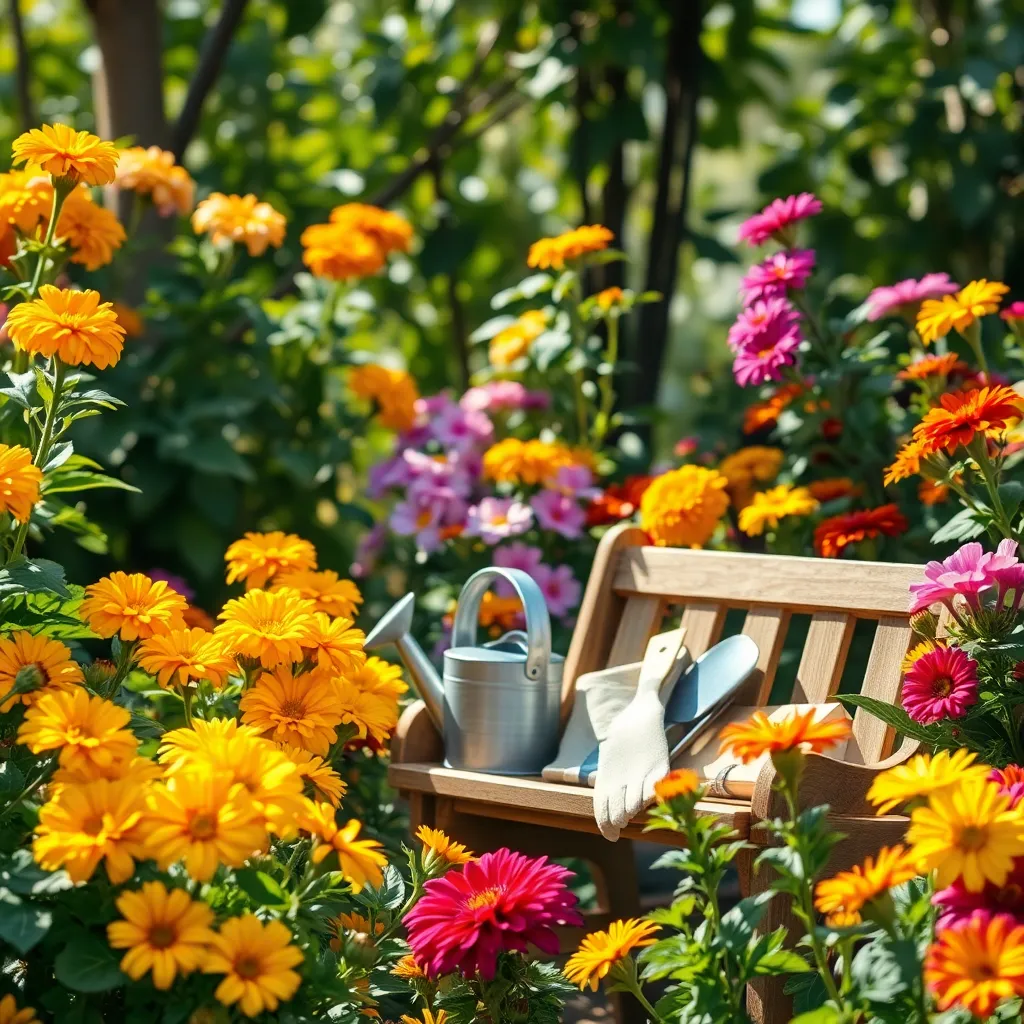
Streamlining your flower care routine begins with understanding the specific needs of your plants. Choose flowers known for their low maintenance requirements, such as marigolds, zinnias, or cosmos, which thrive in a range of conditions and require minimal attention.
Regularly checking soil moisture is crucial to avoid overwatering, which can lead to root rot. Invest in a simple soil moisture meter to help you determine when your plants truly need water, generally allowing the top inch of soil to dry out between waterings.
Fertilizing adds essential nutrients to your garden, but excessive feeding can harm plants. Use a balanced, slow-release fertilizer once at the start of the growing season to provide steady nourishment without the need for frequent applications.
Mulching is another effective way to reduce maintenance efforts, helping retain soil moisture and suppress weeds. Apply a layer of organic mulch, such as shredded bark or compost, around your flowers to keep the roots cool and the garden tidy.
Maximizing Bloom in Limited Spaces
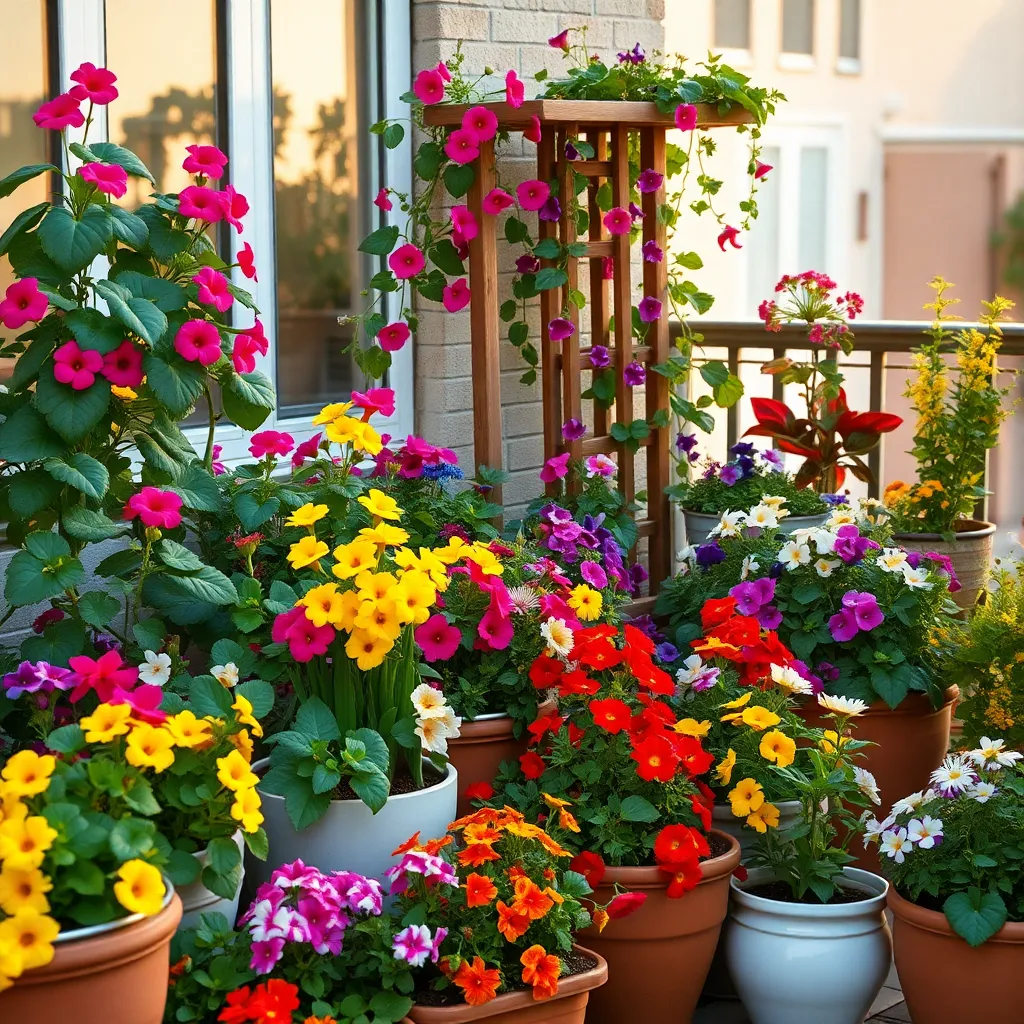
Maximizing bloom in limited spaces requires strategic plant selection and placement. Choose compact or dwarf varieties that thrive in smaller areas, and consider vertical gardening techniques to make the most of your space.
To ensure vibrant blooms, focus on the quality of your soil. Use a well-draining potting mix enriched with organic matter, such as compost or well-rotted manure, to provide essential nutrients.
Regular watering is crucial, especially in small gardens where soil can dry out quickly. Water early in the morning to reduce evaporation and help your plants absorb moisture efficiently throughout the day.
For those with a bit more experience, consider implementing a staggered planting approach to maintain continuous blooms. By planting species with varying bloom times, you can enjoy a colorful display from spring through fall.
Conclusion: Growing Success with These Plants
In exploring the vibrant world of small garden flowers, we’ve unearthed five key relationship concepts that mirror the nurturing of a flourishing garden. First, we learned the importance of nurturing without overwhelming, choosing hardy plants like lavender and marigolds that thrive with minimal care, much like relationships that grow with gentle, consistent attention. Second, diversity is key; just as a mix of flowers enhances a garden, varied experiences enrich relationships. Third, setting boundaries, akin to choosing the right-sized plants like dwarf daisies, ensures healthy growth spaces. Fourth, the role of patience, as seen in the slow bloom of lilies, highlights the virtue of waiting for meaningful connections to blossom. Lastly, adaptability, embodied by resilient succulents, encourages us to embrace change in nurturing relationships.
As your next actionable step, identify one relationship that could benefit from more nurturing and apply one of these concepts today. Bookmark this article to revisit these insights, ensuring your relationships receive the care they need to thrive. Remember, like a lovingly tended garden, your relationships can flourish with the right care and attention. Here’s to your journey toward fulfilling and enduring connections!

